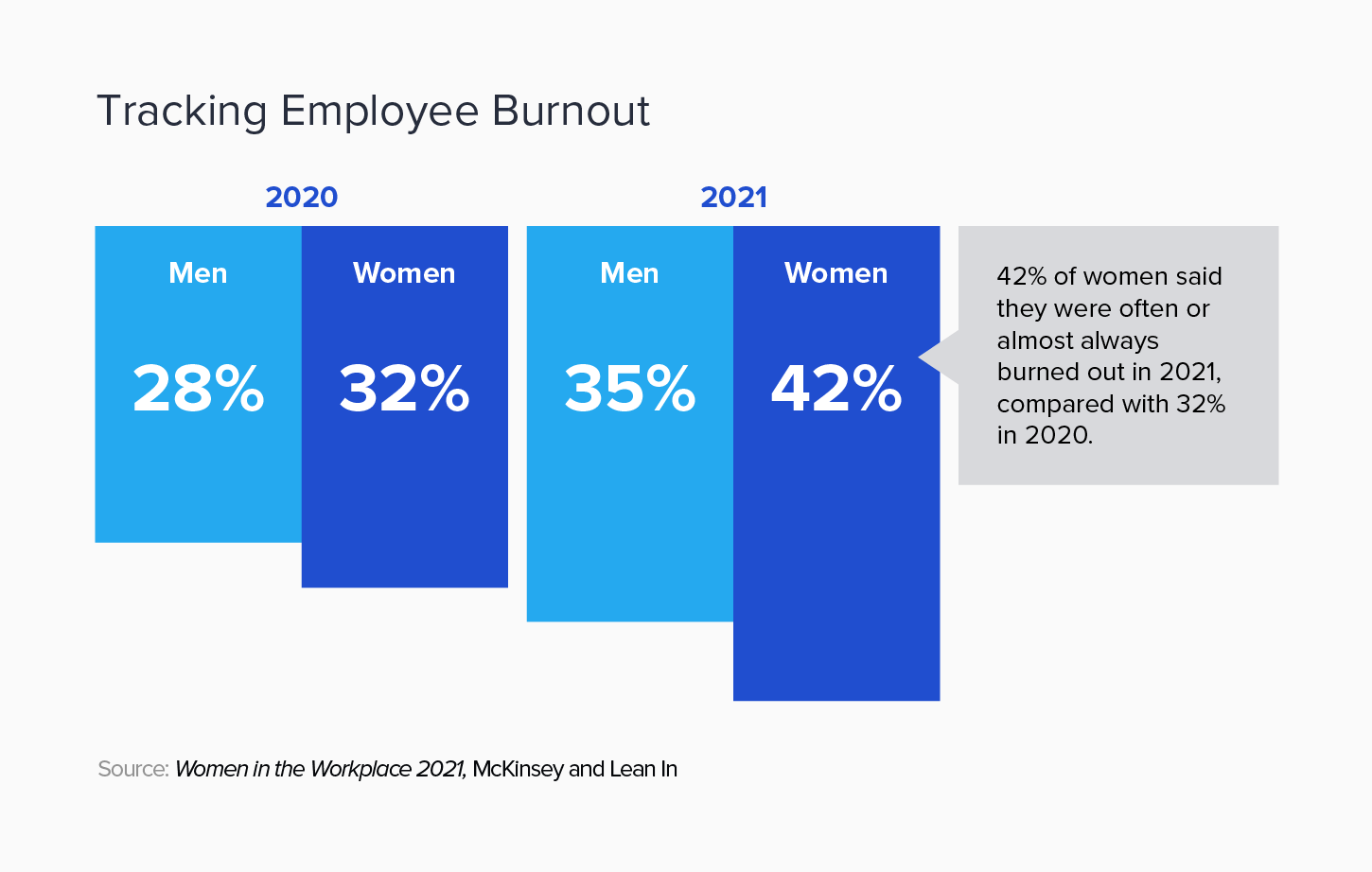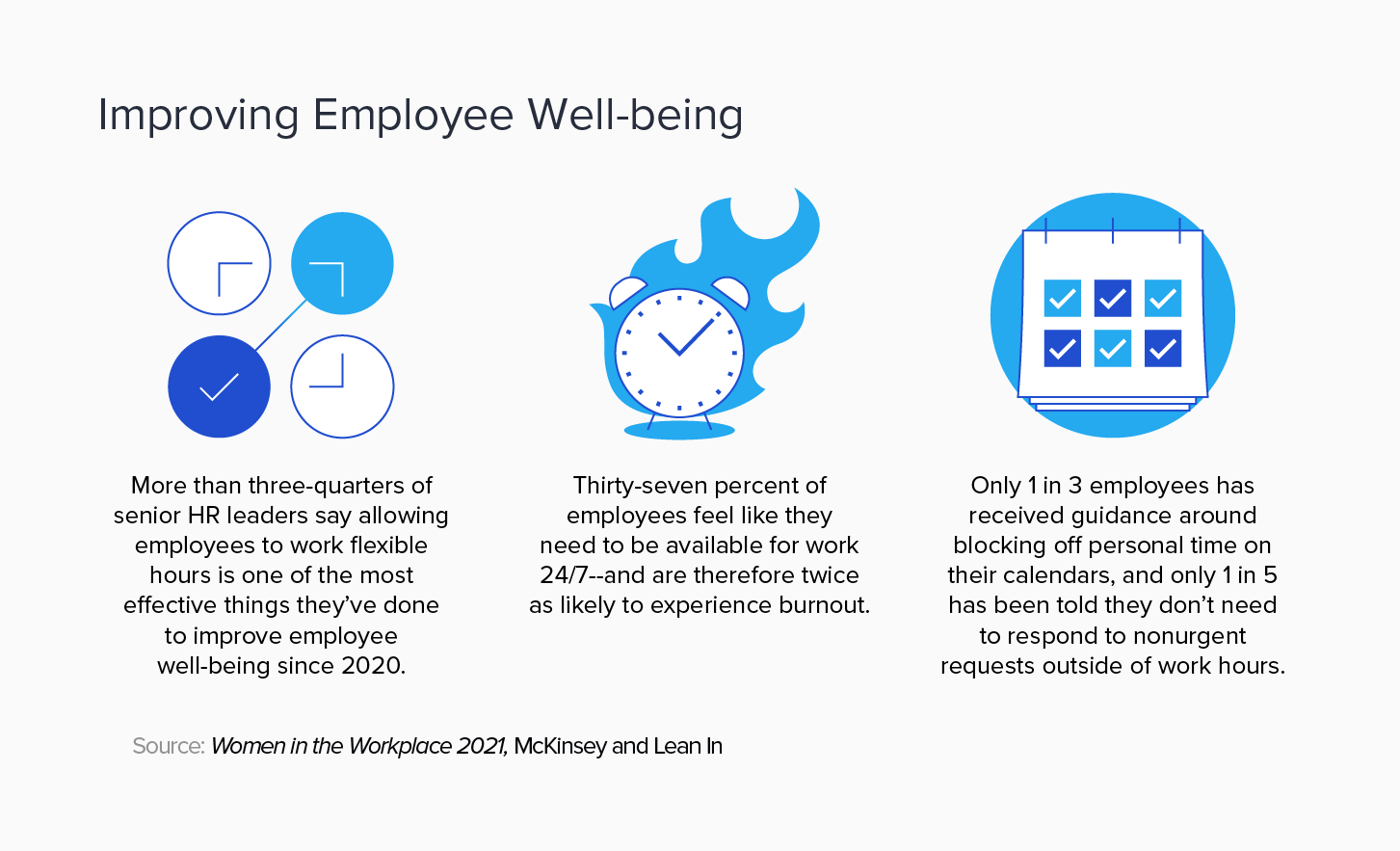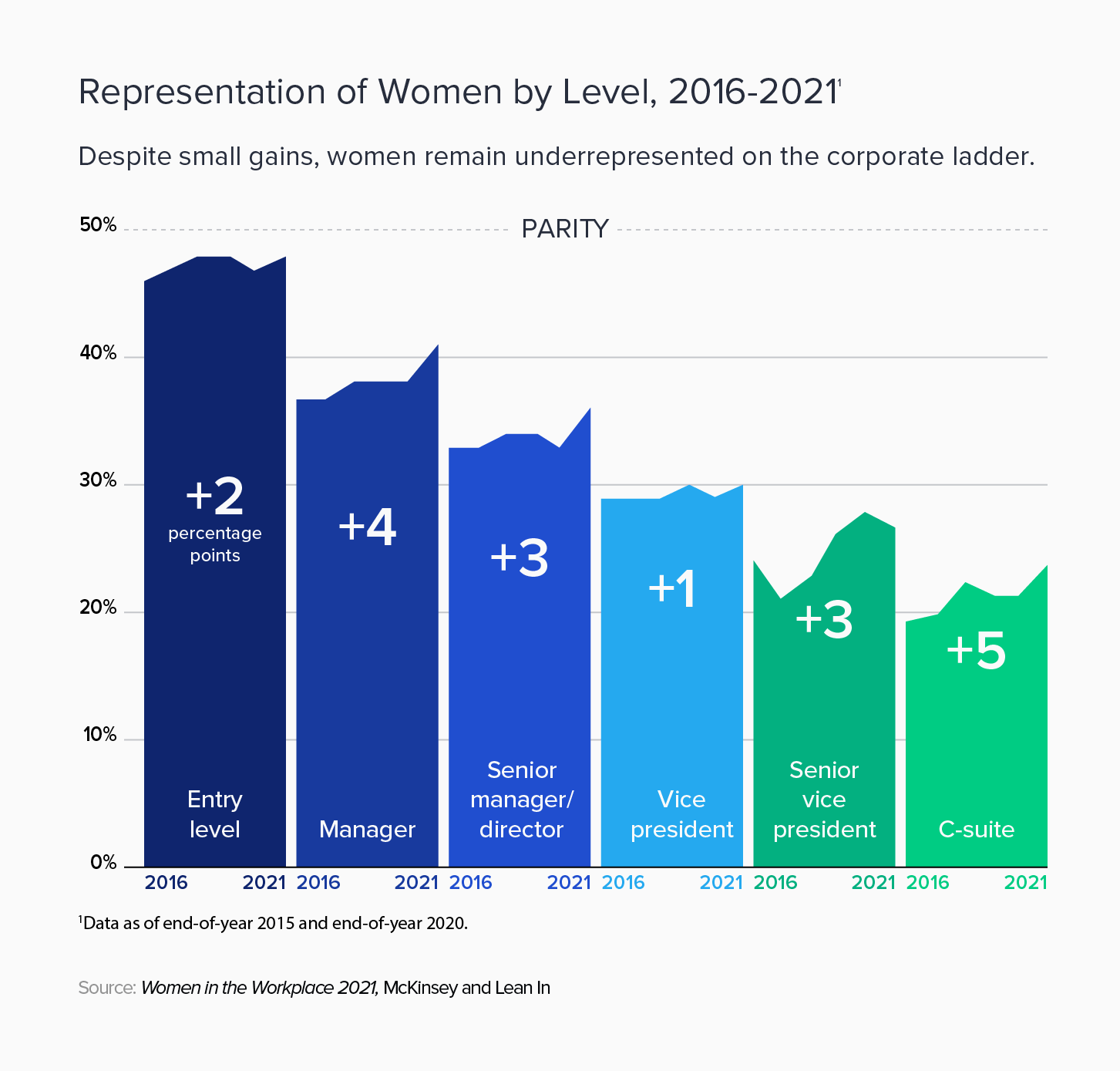Top Benefits to Attract and Retain Female Employees
authors are vetted experts in their fields and write on topics in which they are extremely knowledgeable. All of our content is peer reviewed and validated by world-class professionals.

Around 10 million US mothers living with school-age children were absent from the workforce at the beginning of 2022, according to Census Bureau data. In the struggle to get them back, companies are pondering how to attract female employees and dangling employee benefits like flexible work schedules and expanded childcare. But hiring experts caution that it will take more than the standard offerings to recruit and retain female talent. Here are some of the top benefits to attract female employees to your company:
Paid Leave
When schools and daycare centers temporarily closed in 2020 and 2021, parents were forced to juggle job responsibilities and the needs of their kids simultaneously. As a temporary response, many large employers—including Salesforce, Microsoft, Google, and Facebook—offered paid time off to caregivers. However, with return-to-work plans still uncertain for many parents, the balancing act endures, especially for female talent.
“We understand that life doesn't stop when our employees leave work,” says Trisha Colton, who was VP of Talent Acquisition at Adobe through mid-2022. Adobe continues to offer paid time-off to employees who need it. “Caring for families is their top priority, and we want to assist them in doing so.” The tech giant is now offering 20 business days of paid time-off per year—in addition to existing time-off benefits—to employees who are directly affected by significant events like pandemics or natural disasters. Colton says the company will continue to augment its employee benefit offerings “to support the well-being” of its employees.
Emergency leave is not the only perk to attract and retain female employees. Paid time off to bond with a new child, still a rare benefit for many workers in the US—the only industrialized nation without mandated paid parental leave—is a top priority for new moms. In the competition for talent, the longer the leave, the better.
In early 2022, Pinterest expanded its leave for birthing parents to 26 weeks from 16 and began offering up to 12 additional weeks of paid leave to parents of newborns who spend time in the neonatal intensive care unit. “When we learned more about the heart-wrenching realities of NICU experiences from employees who’ve faced it and realized traditional parental leave standards don’t cover these situations, we decided to lead the change,” says Alice Vichaita, who was Pinterest’s Head of Global Benefits in 2021. The company also offers four weeks of paid leave for parents who experience pregnancy loss.

Family Planning and Fertility Benefits
For many women, the pandemic prompted a reassessment of what they want at work and in their personal lives—and family planning is crucial to that calculation. Employee benefits that help women achieve personal goals give companies a competitive advantage. 42% of companies with 20,000 or more employees offered in vitro fertilization benefits in 2020, and 19% offered egg freezing—up from 6% in 2015— according to Mercer’s 2021 survey on fertility benefits.
Cassandra Pratt, SVP of People at Progyny, a fertility benefits provider for more than 265 clients (including Microsoft, Unilever, and 3M), says companies are recognizing a shift in employees’ priorities, and that comprehensive fertility benefits are critical to attracting and retaining female talent. “Fertility can be a complex and emotionally grueling process, and if you don’t have equitable and comprehensive coverage, then it really does leave out large portions of your employee population.”
Progyny also introduced a week of paid leave for employees who experience a miscarriage, a failed adoption or surrogacy process, or a failed embryo transfer. “We’re trying to build on our bereavement offerings, because when you go through something like that, you really are experiencing a loss,” says Pratt. “We’re trying to offer employees as much support as we can.”
Caregiver Benefits
Finding affordable, reliable child care remains a significant barrier to women re-entering the workforce. Since 2019, thousands of childcare centers have permanently closed and the cost of care has increased by 41% during the pandemic. While Congress debates legislation that would defray costs for families, some companies are providing or expanding backup care—access to free or discounted childcare when a regular provider falls through.
Bright Horizons, a US childcare provider, says it added more than 225 employer-sponsored backup clients in 2020 and 2021. Some companies are opening on-site centers, where parents can enroll their children at heavily discounted rates. Recursion Pharmaceuticals, a biotechnology company headquartered in Salt Lake City, opened an on-site center in July 2021. Other employers, like Progyny, are adding or increasing stipends for online services that provide access to sitters, such as Care.com, Sittercity, and UrbanSitter.

Returnship Programs
Women who leave the workforce to care for family members—as many did over the past two years—find it hard to land a job when they’re ready to re-enter. Nearly half of respondents (46%) in a 2022 Monster survey of 3,000 employers and recruiters said résumé gaps are now seen as acceptable rather than red flags—an 8% increase over 2021. But workplace experts aren’t convinced the bias has disappeared. “The pandemic has done a lot to make people more aware and empathetic about the load that caregivers bear,” says Tami Forman, executive director of Path Forward, a non-profit dedicated to helping people re-enter the workforce after time off for caregiving. “But in this fluid job market, hiring managers are unfortunately still more likely to select a person who is currently employed over someone with a career gap.”
To counter the deficit, some companies are offering returnships. Pioneered by finance leaders Goldman Sachs and Morgan Stanley, these internship programs offer returning caregivers the opportunity to brush up their skills or learn new ones. For companies, it’s also a way to vet talent. (According to Forman, 80% of returnships arranged through her non-profit ultimately lead to full-time roles.) In the past two years, Grubhub, Allstate, Northwell Health, Expedia, Comcast, and Wells Fargo have added returnship programs. “At Path Forward, we saw a huge increase in the number of companies reaching out to us with interest in starting a program since the pandemic began, and a 40% increase in programs launched as compared to 2019,” Forman says.
Career Pathing and Advancement
One of the best ways companies have learnt how to retain female employees is by giving them a path to promotion, which often translates to better pay. Opportunities for mobility are on the rise: In addition to companies offering free college tuition to employees (Amazon, Walmart, and Kroger), many are now helping their workers upskill, reskill, or earn “microcredentials.” In 2021, Amazon announced it would invest $1.2 billion in education and skills training programs—including college tuition for front-line employees—through 2025. PwC, JPMorgan, Accenture, and AT&T are among other corporate giants that have committed to implementing upskilling programs.

To address the problem of women being passed over for promotions, initiatives such as formal mentorships, sponsorships, and women’s employee resource groups (ERGs) are becoming more common. The ERG Women of AT&T, for example, supports female employees with mentoring circles, courses on stress management, and access to detailed information on benefit offerings. Though AT&T has a successful record of retention, as Angela Santone, the company’s Senior EVP of HR, tells Staffing.com, there is more work to be done. “We are always pushing ourselves to think about what else we should be offering,” says Santone, a circle leader for one of the ERG’s mentoring groups.
In 2020, Adobe committed to increasing female representation in leadership positions to 30% globally by 2025. Programs include a Women-in-Technology Scholarship—an annual $10,000 award to female undergraduate students and master’s candidates in computer science degree programs at North American universities—leadership circles, ERGs, and a “day-in-the-life” executive shadowing experience with a key leader in the company.
Empathy and Active Listening
Pinterest’s Vichaita says employee feedback revealed an opportunity to amplify the benefits for female employees – and, on a wider scale, the benefits that the company can offer parents. The rewards are clear: Providing additional time off, comprehensive mental health benefits, and increased work flexibility has led to a reduction in turnover.
“There is no silver bullet to address burnout, and a single solution or benefit won’t fix the issue,” she tells Staffing.com. “Ultimately, diverse teams build better products and create better business outcomes. It is critical for companies to listen to their employees and continue programs that have been successful while expanding key benefits as needs arise, to create a comprehensive strategy and a culture of support.”
